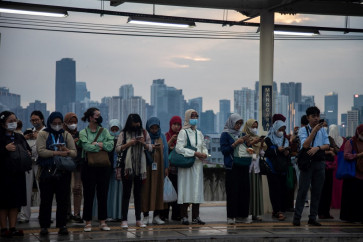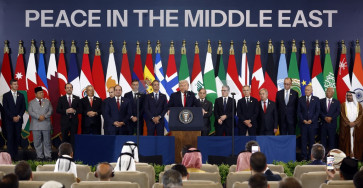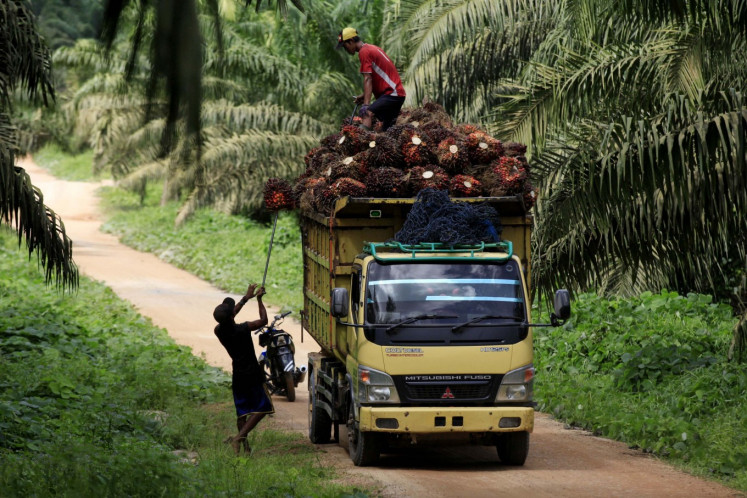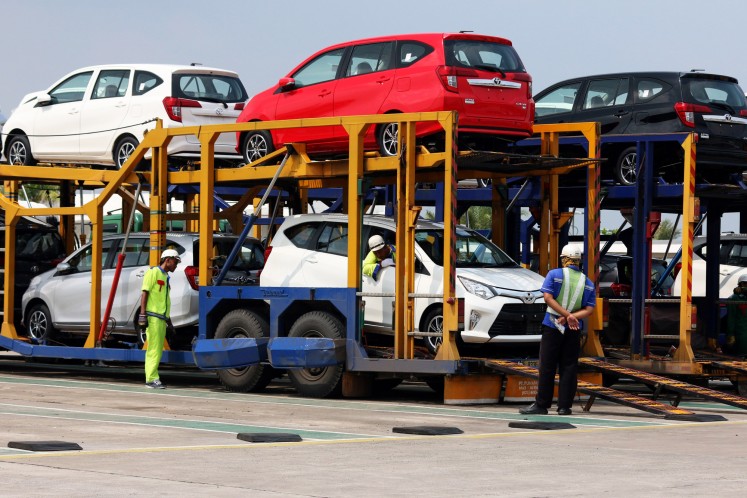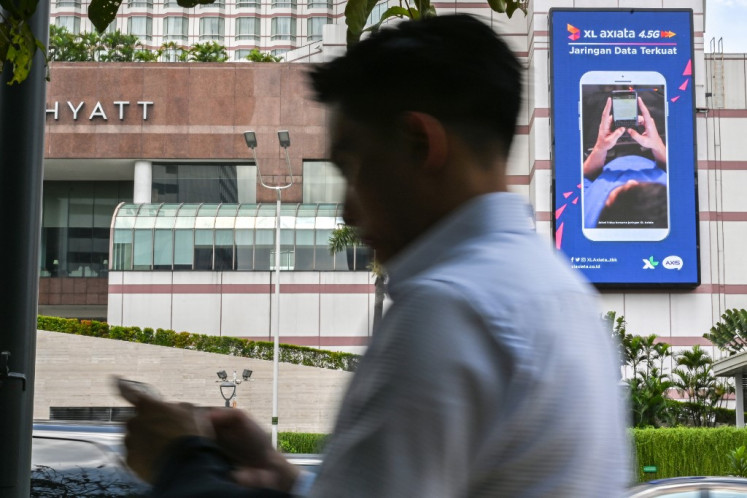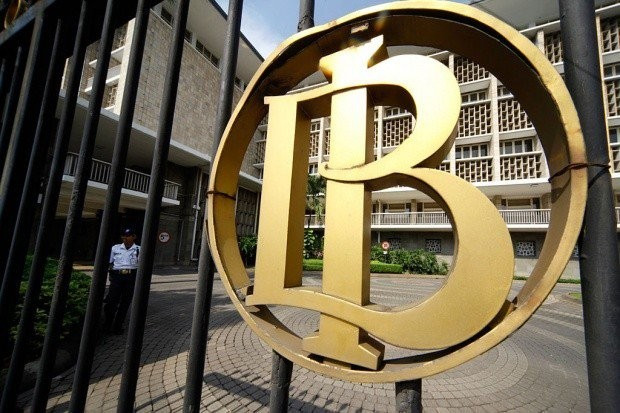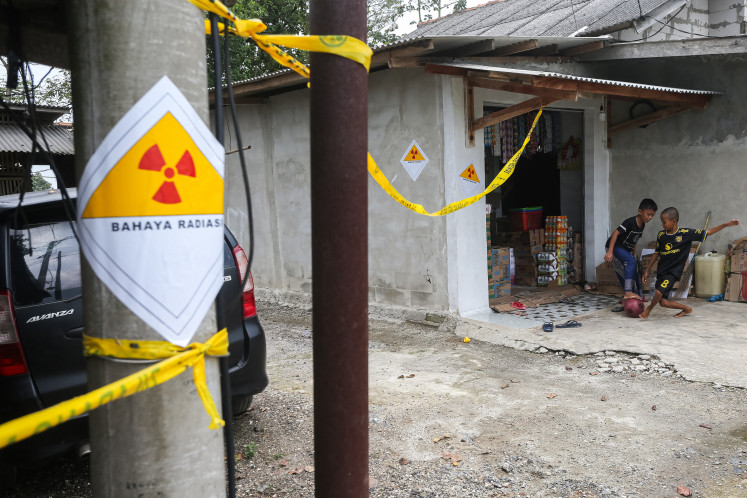Popular Reads
Top Results
Can't find what you're looking for?
View all search resultsPopular Reads
Top Results
Can't find what you're looking for?
View all search resultsView Point: A nation of millionaires, billionaires and trillionaires
The one thing that a first- time visitor to Indonesia would likely be surprised by most upon arriving in Jakarta is not so much the unfriendly and suspecting immigration or customs officers (you get that everywhere), or the peculiar sweet-smelling air coming from clove-pasted kretek cigarettes or the inability of Indonesians to wait in line
Change text size
Gift Premium Articles
to Anyone
T
he one thing that a first- time visitor to Indonesia would likely be surprised by most upon arriving in Jakarta is not so much the unfriendly and suspecting immigration or customs officers (you get that everywhere), or the peculiar sweet-smelling air coming from clove-pasted kretek cigarettes or the inability of Indonesians to wait in line. It’s the size of the currency that he or she has to deal with.
Indonesia is one of only a handful of countries in the world today where daily transactions such as paying taxi fares, restaurant and hotel bills, amount to the tens of thousands or hundreds of thousands, or even in the millions. A taxi ride from Soekarno-Hatta International Airport into town could cost as much as Rp 100,000 (US$10.41) or more. Indonesians are used to it and our brains are already trained to deal with large figures, but for first-time visitors, it could be a rude awakening.
For a friend from Bangladesh, a much poorer country, the shock quickly became a pleasant surprise as soon as he figured out the equivalent in Bangladesh taka. “I never felt so rich in my life before coming to Indonesia,” he exclaimed as he insisted on paying for our lunch. I didn’t want to argue against that.
With more Indonesians now also traveling abroad, actually they are the ones in for a shock as they try to come to terms with rupiah exchange rates. Not so much when they pay their bills. On the contrary, many non-frequent travelers are amazed at how “cheap” it is to be paying in currencies with much smaller denominations. Since they use credit cards, they don’t often bother to convert their purchases into rupiah. The shock sinks in when they receive their credit card bills back at home.
Indeed, in Indonesia, just about everyone is shamelessly a millionaire. Even a laborer can claim to be one since minimum wage in Jakarta is over Rp 2 million. Almost every official running for office is a billionaire (we know this because they have to publicly declare their wealth). It wouldn’t be surprising to learn that a few Indonesians are actually trillionaires, although the Merriam-Webster online dictionary does not recognize this as a word yet (It should, for Indonesia’s sake).
For the benefit of non-Indonesian readers, a billion has nine zeroes, and a trillion has 12. If you can’t deal with too many zeroes, then you may refer to a billion as one thousand-million, and a trillion as one-million-million. Rest assured, they have the same number of zeroes. Another foreign visitor once quipped that the rupiah felt more like Monopoly money (the one-time popular game of property buying).
If Finance Minister Agus Martowardojo has his way, all of this will change, not soon, but a few years from now. Agus is leading a government campaign, launched this week, to prepare the public ahead of the plan to redenominate the rupiah.
The plan is to drop three zeroes from the currency. Your Rp 1,000 becomes Rp 1, Rp 10,000 will become Rp 10, and a Rp 100,000 will become Rp100. There will be smaller denominations in cents too.
Agus promises that the value of your rupiah will not change. A liter of subsidized gasoline, currently at Rp 4,500, will become Rp 4.5 (unless of course the government decides to eliminate subsidies, in which case the real price could double, but that’s a different story).
It’s interesting to see that Agus is already working on the public even though the redenomination plan has not been approved by the House of Representatives. He must have figured out that it is easier to convince the public than politicians, who will likely politicize the issue, especially with general elections coming up in 2014.
Critics, including many in the House, were quick to express their objections to the plan. Some argue that the move could lead to public confusion, massive panic and economic chaos, while others fail to see the urgency for such a bold move.
Many also mixed up redenomination with “sanering”, a term that refers to the revaluation of the rupiah that Indonesia carried out in 1950 and 1959. Then, people woke up one morning to find that their money had lost much its value. But only a few people remember that episode, just as few people remember when Indonesia redenominated the currency — dropping a few zeroes — in 1965.
Many people, however, painfully remember the series of devaluations in the 1980s that set off public panic-buying, and the massive depreciation of the rupiah during the 1997-98 financial crises that made them a lot poorer. The rupiah’s exchange rate, which had been hovering at Rp 2,350 to the US dollar in early 1997 fell to as low as Rp 16,000 by January 1998, before it settled and stabilized at the present range of Rp 9,000 and Rp 10,000. The rupiah plunge translated to runaway inflation of more than 77 percent in 1997.
Responding to criticism, the Finance Ministry argues that now is the best time for Indonesia to redenominate its currency. The economy is going strong, growing at a rate of more than 6 percent a year. Indonesia needs to align the denomination of its currency with the rest of Asia.
The current plan, if the House approves, is to phase into a transition period beginning in 2014 or 2015, when the new currencies will circulate with the old denominations, before Indonesia returns to the single, simpler and smaller denomination currency by 2022.
The decision to move forward reflects the growing confidence, not only of the government, but also of President Susilo Bambang Yudhoyono. Taking such a drastic measure ahead of the 2014 elections could potentially be political suicide, just as it would be suicidal to raise fuel prices. And here we all thought that the President couldn’t make such a bold decision. But then again, he isn’t running for office again next year.
Could this be Yudhoyono’s legacy? Much depends on Agus’ ability to convince the public on the merits of the redenomination plan, and for him (and his successor in the next administration) to manage the transition without causing public panic.
Redenomination does make sense viewed from many angles. It is really more of a matter of when than if. Kudos to the President and the finance minister for taking a political plunge. They have their work cut out for them, and not just politically.
Most Indonesians are already comfortable with their unofficial designation as millionaires, billionaires (as inflated as they may be), and as trillionaires. For many, their title is far more precious than the simplicity of dealing with fewer zeroes.
The writer is a senior editor with The Jakarta Post.


